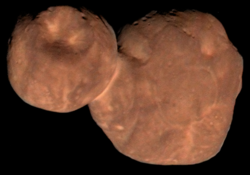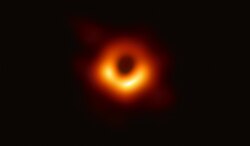 | |
| Object type | Tidal disruption event |
|---|---|
| Constellation | Volans |
| 07h 00m 11.546s [1] | |
| Declination | −66° 02′ 24.14″ [1] |
| Redshift | 0.0262 |
| | |
ASASSN-19bt was a tidal disruption event (TDE) known for being the first such event discovered. It was discovered by the All Sky Automated Survey for SuperNovae (ASAS-SN) project, with early-time, detailed observations by the TESS satellite. It was first detected on January 21, 2019, and reached peak brightness on March 4. [2] [3] [4]
The black hole which caused the TDE has a mass of around 6 million suns and is in the 16th magnitude galaxy 2MASX J07001137-6602251 in the constellation Volans at a redshift of 0.0262, around 375 million light years away. [2] [5]
Observations in UV light made with NASA's Neil Gehrels Swift Observatory showed a drop in the temperature of the tidal disruption from around 71,500 to 35,500 degrees Fahrenheit (40,000 to 20,000 degrees Celsius) over a few days. This is the first time such an early temperature drop has been seen in a tidal disruption event. [3] The transient resulting from the tidal disruption event has been cataloged as AT 2019ahk. [1]


